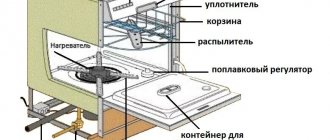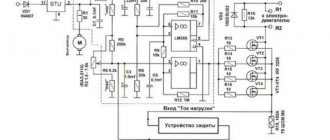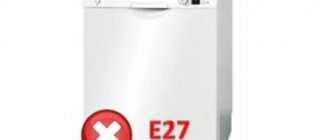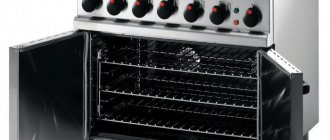Almost any instruction for modern household appliances can begin with the following words: “Well, did you break it?” Indeed, we rarely begin our acquaintance with even complex equipment by reading the instruction manual, because it is written in difficult-to-read language and without taking into account many nuances.
You will learn everything about how to use a Bosch dishwasher in our article. We will tell you how to prepare the machine for upcoming use and select the necessary modes. We will tell you what products you will need to process dishes and clean the unit.
Where to start using it?
A dishwasher is bought in order to make the housewife’s work easier and ensure reasonable water savings. In order not to prepare yourself for unpleasant surprises from the very beginning, the installation and connection of this household appliance should be entrusted to specialists.
So, the machine is placed in the designated place, and the water supply and drain are connected. Now you can start using it.
Why do you need a “idle” start?
Bosch, like a number of other manufacturers of household appliances, strongly recommends a test run of the dishwasher.
It is necessary to make a “idle” start for the following reasons:
- lubricants accidentally preserved on parts of the product, as well as dust and debris that got inside should be eliminated;
- we get the opportunity to check how well the machine is installed, evaluate the rate of water flow, its heating level, see how the entire work process proceeds, including the draining and drying stages;
- When problems are identified, it becomes possible to eliminate them at the test washing stage, eliminating the labor-intensive unloading of dishes.
We know that during regular washing you cannot do without special products, but a test run in this sense is no exception. You will need the regenerating salt and other detergents included in the starter kit that customers are usually asked to purchase with their dishwasher.
A test run of the dishwasher is necessary, first of all, to check the quality of its installation and make sure that the unit is in good working order.
First start algorithm
What we need to know about the operating conditions of the purchased equipment is the level of water hardness in the region where it will operate. You are in luck with Bosch machines: buyers of this company’s products do not need to be guided by their own experience when determining hardness, or resort to traditional methods.
A number of models of this brand include test strips for determining hardness. You just need to lower the paper strip with the reagents applied to its surface into the water for just a couple of seconds.
And then compare it with the table provided by the manufacturer. After completing these simple steps, you will be ready to test run your purchase.
Proper connection of the dishwasher involves installing it in a specific place (1) and connecting it to the electrical network (2), water supply (3) and sewerage (4) using standard hoses and a power cord
The startup procedure is quite simple, you need to follow these steps sequentially:
- open the car by pulling the door towards you;
- pull out the lower basket to gain access to the lid covering the water softening salt reservoir;
- unscrew the lid, pour water into the reservoir and pour special salt from the starter kit into it;
- screw on the tank lid and remove any water that may have spilled into the chamber while loading salt with a rag;
- Now set the salt consumption on the control panel, taking into account the previously determined water hardness.
Let's add some clarification. Please note that water is poured into the salt tank only once - before the first start. It should be filled to the top.
The salt is poured in using a special funnel (or watering can), which is usually included in the kit. If you don't have a watering can, use a regular cup. Add salt until it becomes visible through the filler hole.
Water is poured into this hole, located at the bottom of the unit’s chamber, and special salt intended for dishwashers is added.
The water displaced during the backfilling process should not confuse you: this is how it should be. Once the reservoir lid is closed, the displaced water should be thoroughly wiped away. It should not be inside the camera.
It remains to check whether the water supply tap is open, after which you can activate the first start. To visualize the entire algorithm of actions, watch the video that we posted at the bottom of this article.
Suitable detergents for dishwashers
Dishwasher users must purchase a starter kit, which is usually offered with their main purchase. You can separately purchase rinse aid, detergent tablets or special powder, as well as salt to soften tap water, which we have already discussed.
The starter kit includes all the detergents, without which it is simply impossible to operate any dishwasher - this is a mandatory minimum
The advantage of starter kits for beginners is that they already include everything you might need. In addition, they include products from the same manufacturer, which allows us to hope that their components are not only perfectly compatible, but also successfully complement each other.
Often, purchasing a set will cost less than purchasing its components, sold separately from each other.
In addition to the three absolutely necessary components, fragrances and products can be used for effective washing to help clean the car itself from grease and plaque. As a rule, they are purchased as the need for them arises.
Water softening salt
For high-quality dishwashing, soft water with a low content of calcium salts should be used. If hard water is not softened, scale marks will form on the walls of the chamber over time. Salt allows you to bring water to a state in which the results of the equipment’s operation please its owner.
Regenerating salt for loading into the dishwasher should not be confused with ordinary table salt, which everyone has in their kitchen: this is a special substance for softening tap water
What means can be used?
Bosch machines can use any detergent that is on sale today.
It can be:
- compressed tablets;
- powder;
- liquids.
The only restriction that must be strictly observed: these must be special substances intended for loading into dishwashers. Do not use chemicals to wash dishes manually.
The detergents used must be intended for processing dishes specifically in dishwashers, and those used for manual washing cannot be used
Depending on the composition of their components, there are three types of dishwasher detergents:
- with chlorine and phosphates;
- without chlorine, but with phosphates;
- without phosphates and without chlorine.
If there are no phosphates in the composition of the product, a white coating may form on the walls of the chamber and on the dishes themselves. To avoid such consequences, you have to increase the consumption of detergent.
The absence of chlorine will not provide the desired effect if the dishes need to be bleached. Dark deposits on cups and grayed plastic may be the result of a lack of chlorine. The situation can be saved by washing with increased intensity or increasing the consumption of detergent.
Why do you need a rinse aid?
When using rinse aid, which enters the chamber at the last stage of washing, water drops do not leave marks on the dishes.
If you do not use this preparation while the machine is operating, then after drying, unaesthetic stains will remain on the glassware. In addition, it is high-quality dishwasher rinse aid that ensures clean dishes shine.
Rinse aids give the glass that same gloss and shine that any housewife strives for, but it is important to use them in moderation so that the dishes do not become sticky and are not covered with whitish or rainbow stains
The volume of rinse aid can be changed depending on need. If this liquid was not enough, you will see a white coating on the plates and they will be dull. In this case, the dose is increased. Excess of the drug will appear as rainbow stains on the pans. They will also feel sticky to the touch. Then the dose is reduced.
Special detergents
There are combination drugs that are called “three in one”. They contain all three components listed above. The disadvantage of such products is the inability to adjust the salt content, as recommended by Bosch equipment manufacturers.
Water that is too hard impairs the quality of washing, and water that is too soft contributes to glass corrosion: calcium is washed out of its composition. If you have to wash silver products, you must use detergents specially designed for this purpose. Others won't work.
You can see the order in which detergents are loaded and which compartments of the cuvette located on the inner surface of the door are filled with in the videos that we invite you to watch. They are in the last part of the article.
Rules for loading dishes
There is a basic rule that applies to all Bosch dishwashers. In the chamber of the unit there are rocker arm sprayers, through the nozzles of which liquid is poured onto the dishes.
So, cups and plates in boxes should be placed so that their presence in close proximity to the sprayers does not interfere with their rotation. The opening valve of the detergent cuvette must not be blocked.
Correct loading of dishes into the dishwasher is really important, since the quality of work for which this unit was purchased depends on it
Before loading kitchen utensils into the compartment, make sure that all items are dishwasher safe. Kitchen and dining utensils that cannot withstand high temperatures are best washed by hand. We are talking about objects covered with glaze, porcelain, antiques and rarities, as well as products made of bronze, pewter, aluminum, brass and copper.
Make sure large food scraps are removed. If the machine has a soaking option, then it can be used to wash large pots. If there is no soaking, remove food debris from the surfaces with a brush. It is bought in hardware stores.
To increase the washing efficiency, in full accordance with the instructions for the brand’s machines, you can first hold cutlery and other utensils under hot water. The grease on the surfaces will become wet and will be easier to wash off. For proper placement of dishes inside the chamber, loading boxes (baskets) are provided.
Using telescopic guides and the Rackmatic system, the boxes can be moved and pulled forward to make it more convenient to place everything that needs to be washed in them. Even if the boxes are completely filled, you don’t have to worry: they won’t tip over.
The dishes are placed inside the chamber in boxes located on two or three levels depending on the model of the dishwasher being loaded.
Depending on the number of mobile and folding elements, three types of boxes are distinguished:
- Vario;
- Vario Flex;
- Vario Flex Plus.
The last boxes on this list are equipped with additional protection for fragile dishes that need careful handling. In particular, 12 glasses with high stems are placed on additional shelves of the lower box. It turns out that in these models the total number of simultaneously washable glasses can reach 18 pieces.
Depending on the specific dishwasher model, utensils can be loaded in two or three levels. The third level is designed to accommodate cutlery, as well as items of non-standard sizes.
Dishes placed in the boxes of a Bosch dishwasher are reliably protected from mechanical damage: the rounded ends of the fixing grids are one of the manifestations of such protection
The Rackmatic system helps to correctly position the boxes in height. After all, proper loading of dishes allows moisture to wash it as evenly as possible from all sides. To secure glasses and cups, you need to use the holders designed for them.
By manipulating the holders, you can make the basket deeper or adapt it to accommodate large items: pots and stewpans.
If the model has boxes of the third upper level, then cutlery is washed in them, which are placed in this kind of tray compactly and neatly
The procedure for using baskets, changing their location and types of loading are contained in the instruction manual for the specific model you have chosen. We recommend that you study this part as carefully as possible.
Recommendations: how to wash dishes in the dishwasher
The main answer to the question: “How to use a dishwasher correctly?” is advice on choosing the right dish cleaning mode.
Modern devices usually have several automatic programs built-in, most of which have, for example, a “pre-wash” function. It is usually used either when you do not yet have the required amount of dirty dishes, or if the dishes are very dirty and need to be washed first.
To wash dishes in the dishwasher you need to purchase special capsules
You cannot remove spoons, glasses and plates immediately after turning off the unit. It should take at least 5-10 minutes. During this time, the contents of the car should dry and cool. It is better to remove the dishes from the bottom container first, because some water may spill out of the baskets during the removal process. If you begin to remove items from the top tier first, water may get on dry and clean dishes.
Some recommendations for using a dishwasher:
- The first and main rule is that you cannot place items with food residues on pallets;
- It is not recommended to overfill the dish baskets - tightly packed items will not be washed well.
- It is better to place large or very dirty dishes in the lower basket, but not large and small, or very delicate ones - in the upper basket.
- Knives with dull wedges and spoons should be placed with the handle down. Pointed knives and forks - handle up.
- Spatulas, ladles, skimmers and other items can be simply placed horizontally at the top of the baskets.
- All containers - cups, plates, pots, mugs - are placed bottom to top.
The dishwasher door itself should be closed only after checking how freely the blades can move.
Washing and drying modes
The washing programs performed by Bosch dishwashers are divided into:
- automatic;
- fast;
- delicate;
- economical;
- normal;
- intense;
- with pre-rinse.
The programs are developed taking into account the type of dishes, the materials from which they are made, as well as the type and intensity of dirt present on them.
Each of the available programs takes into account the following factors regarding the washing procedure:
- water temperature;
- duration of the process;
- volume of water consumption;
- type of detergent used;
- mechanical impact method.
When performing standard programs, the wash duration and water temperature are preset parameters. Each type of dishware has its own program, taking into account the degree of soiling.
Standard modes include delicate, eco and intensive wash. Various temperature ranges are provided to implement automatic programs. The machine determines water consumption, duration of operation and washing temperature within the prescribed range independently, based on the readings of aquasensors.
For example, reacting to the degree of soiling of the dishes, the machine can increase or decrease the number of rinses.
There is a separate program for different types of dishes and types of soiling; all that remains is to choose from the variety of washing modes that will help the housewife find the optimal solution for her tasks.
Programs, which include, for example, soaking, effectively complement the basic washing algorithms. This is the implementation of additional capabilities of Bosch technology. For example, if dishes have just been used, they can be washed in accelerated mode with a shortened wash cycle occurring in just 29 minutes.
The Turbo speed-20min program can be called an innovation. Its use allows you to wash dishes even in 20 minutes. Such a program will help out the hostess if she has to set the table with the same items several times over a short period of time.
There are also additional options that significantly make the owner’s life easier and help her out in extreme situations.
Additional programs expand the capabilities of standard functions:
- Timer. Using the timer, the start of washing can be delayed for any time period ranging from one to 24 hours.
- Hygiene. If additional hygienic treatment of dishes is necessary, it can be done by lengthening the last phase of the cycle and increasing the temperature at which it passes.
- Vario Speed. You can speed up the program without losing the quality of the final result by forcing both liquid spray arms to work simultaneously. This option is available in the Vario Speed Plus variation on premium units. At the same time, operating time is reduced by 66%.
- Half load. If the chamber is only half loaded, this nuance should be taken into account, accordingly reducing the consumption of water and detergents.
- Intensive zone. This option allows you to wash dishes in the lower basket more intensively. In other levels the program will run in the main mode. Using this option, you can process dirty pans and fragile wine glasses at the same time.
- Shine & Dry. New option available for wine glasses and glassware. Thanks to additional rinsing, increasing the volume of rinse aid and long drying time, the glass acquires an incredible shine.
If the instructions for your model provide such an option, then at the first stage of the machine’s operation you can add a forgotten item to it, temporarily interrupting the wash. To put the machine into standby mode, carefully open the door. After closing it, the program running by the machine will automatically continue.
A very convenient additional function is provided by a timer, which helps to delay the completion of work for a given period of time, which allows the housewife to manage her time more successfully.
Completion of work will be indicated by a sound and light (beam on the floor) signal. It is customary to unload the boxes starting from the lower basket. At the same time, drops that may remain on the upper baskets will not spoil the appearance of the items located below.
If you adhere to the requirements stated by the manufacturer, your unit will serve you for a long time.
Introduction to the basic programs of Bosch dishwashers
- Choose a washing program based on the number of dishes and the degree of soiling.
- The automatic mode, using sensors inside the machine, automatically selects the duration and intensity of washing.
If there is a high degree of contamination or for burnt food, the “intensive” mode is suitable. The dishes will undergo soaking and several washing cycles at a temperature of eighty degrees, followed by drying. The Bosch 40E10RU series 2 is equipped with this program. Energy and water consumption will be less if you first remove the main contaminants under running hot water.
- If the pollution is not severe, select the “normal” mode. This one cycle of washing, rinsing and drying will be at a temperature of sixty degrees.
- The fast “economy” mode is intended for dishes without obvious contamination. For example, if you just need to refresh it before lunch. This mode is available in Bosch SMV30D20RU. Also, in some modifications there is a special Turbo washing mode for 20 minutes.
- The Bosch SPV4030RU machine has a “delicate” or Shine & Dry mode for fragile dishes.
- The Vario Speed Plus accelerated mode activates both water supply devices at once, thereby reducing washing time without loss of quality.
- A timer with a delayed start of up to a day will help you wash dishes, for example, only at night. This is convenient for those housewives in whose houses the payment for electricity changes at different times of the day.
What problems can you fix yourself?
If your Bosch dishwasher fails, you need to contact your nearest service center for help. But sometimes the breakdown is so minor that it makes no sense to hire specialists to fix it.
The unit independently monitors the health of its own systems and, in the event of a problem, displays an error code on the display. The meaning of the codes can be found in the instructions for your machine.
A system that constantly tests its own operation, if a malfunction is detected, displays the following error codes:
Let's talk about those that you can eliminate on your own:
- E4 – there is a problem with switching the flow. This error can occur when the hose is clogged. If the hoses have been checked and the display still shows E4, contact service.
- E6 – there is a problem with the aquasensor, which is responsible for recognizing the level of contamination of the dishes. This error is typical for the Bosch Silence Plus model. It appears if the intensive washing program is selected for dishes with minor stains.
- E15 - aquastop is turned on, that is, a reaction to a water leak has occurred. It is necessary to check all hoses and fix the problem.
- E17 - an error occurred in filling the liquid. This situation may arise if increased pressure has formed at the point where the water supply is connected to the dishwasher.
- E24 is a signal that waste water is poorly drained or not drained at all. The cause may be a clogged drain that will have to be cleaned, or a clogged hose. Perhaps the hose is simply pinched.
- E27 – power supply has deteriorated due to a drop in voltage in the electrical network. The cause of this phenomenon may be a peak load on the network. If you install a voltage stabilizer, this type of trouble can be avoided.
It happens quite often that the machine does not turn on. Most likely there is a problem with your network connection. Check the fuse, if it is blown, replace it.
It is possible that the dishwasher is blocked. Make sure to close the washer door properly. Check the sprinkler nozzles, water supply hoses and drain filters for clogging.
In order to prevent malfunctions and malfunctions in the dishwasher, you should follow the manufacturer’s recommendations, take into account what can and cannot be washed in the machine, and place items in the baskets correctly.
Necessary maintenance
In order for any mechanism to be in excellent working condition for a long time, it must be properly cared for.
High-tech and modern Bosch dishwashers also require maintenance. The status of their individual devices should be constantly monitored.
No matter how strange it may sound, the dishwasher also needs to be washed, its chamber dried with napkins, filters and sprayers cleaned, grease and scale removed
You can find comprehensive information about caring for the devices of your specific Bosch dishwasher model in the instructions for this unit:
- Rocker arms. Scale or grease found on their surfaces is a reason to run an intensive washing cycle without loading, but with detergents.
- Filters. The condition of the filters must be checked after each operating cycle. Large contaminants are removed, and crayons that clog pores are washed off with hot tap water. If this is not done, dirt may cause the drain pump to block. And repairing the unit will require money and time.
- Sprinklers. To prevent the quality of washing from deteriorating, the sprinklers must be periodically removed and washed with hot running water to remove food residues and scale.
If you strictly comply with all the requirements and operating conditions prescribed by the manufacturer, the service life of your equipment will be as long and efficient as possible.
Let's look at how to use a Bosch dishwasher
Modern dishwashers are quite convenient and practical equipment. It is almost impossible to get injured while using them. But despite this, all safety precautions must be observed when using the machine.
Sometimes housewives complain that it is impossible to wash dishes in machines such as Siemens, Bosch, Electrolux, Sigmund and Stein, Veko, Ariston, etc. because they simply do not wash them. And the point here is not at all the poor quality of equipment, for example, the Electrolux brand.
Any operating mode of a Bosch dishwasher can be selected at the top of the door
The reasons for ineffective laundering when using units of well-known brands usually have completely different factors. There are several of them, and all of them have nothing to do with the technical structure of the machine.
Reasons for poor dishwashing in machines:
- You should not expect a very good result if initially there was dried or burnt food on the walls of the plates, pots or spoons when loading them into the machine;
- Sometimes dishes may not be washed due to the wrong option that you set for them, or because additional programs were not enabled;
- Dishes do not wash well even when the machine is overloaded;
- It is necessary to clean the impeller nozzles as often as possible;
- Do not allow any solvents to get inside the device;
- It is prohibited to use household chemicals for manual dishwashing;
- Operating the machine without regeneration salt is not recommended;
- Do not open the door while the device is operating;
- After each wash, the filters must be thoroughly cleaned;
- Wipe the external surfaces of the machine regularly;
- If any misunderstandings arise, do not try to repair the device yourself.
Reliability and ease of use are what distinguishes this equipment from reputable brands. If you follow all the technologies for its use and properly refill the device, then your dishes will always be clean, and the device itself will last a long time.











